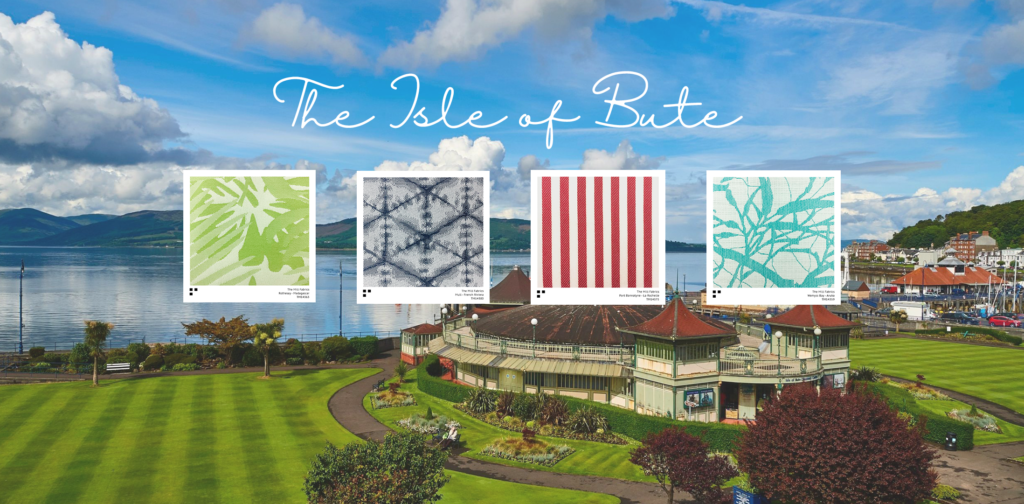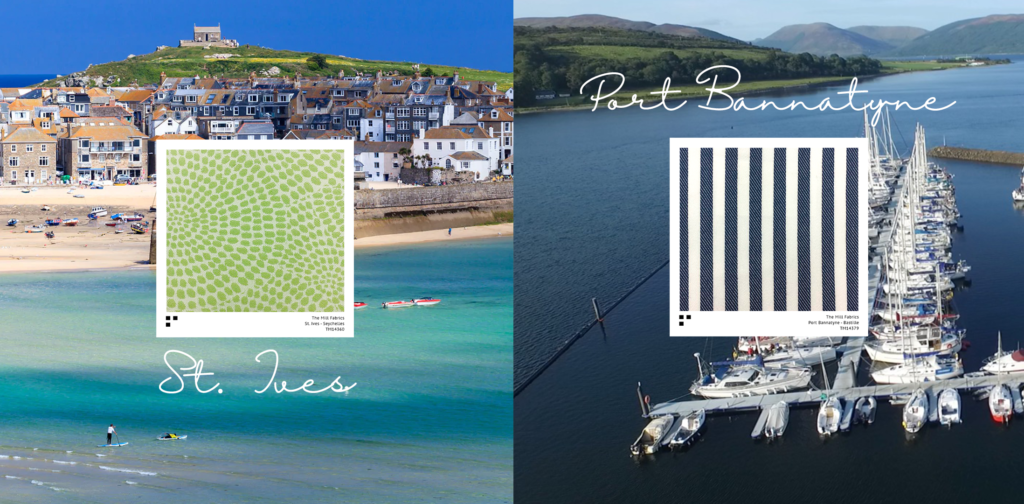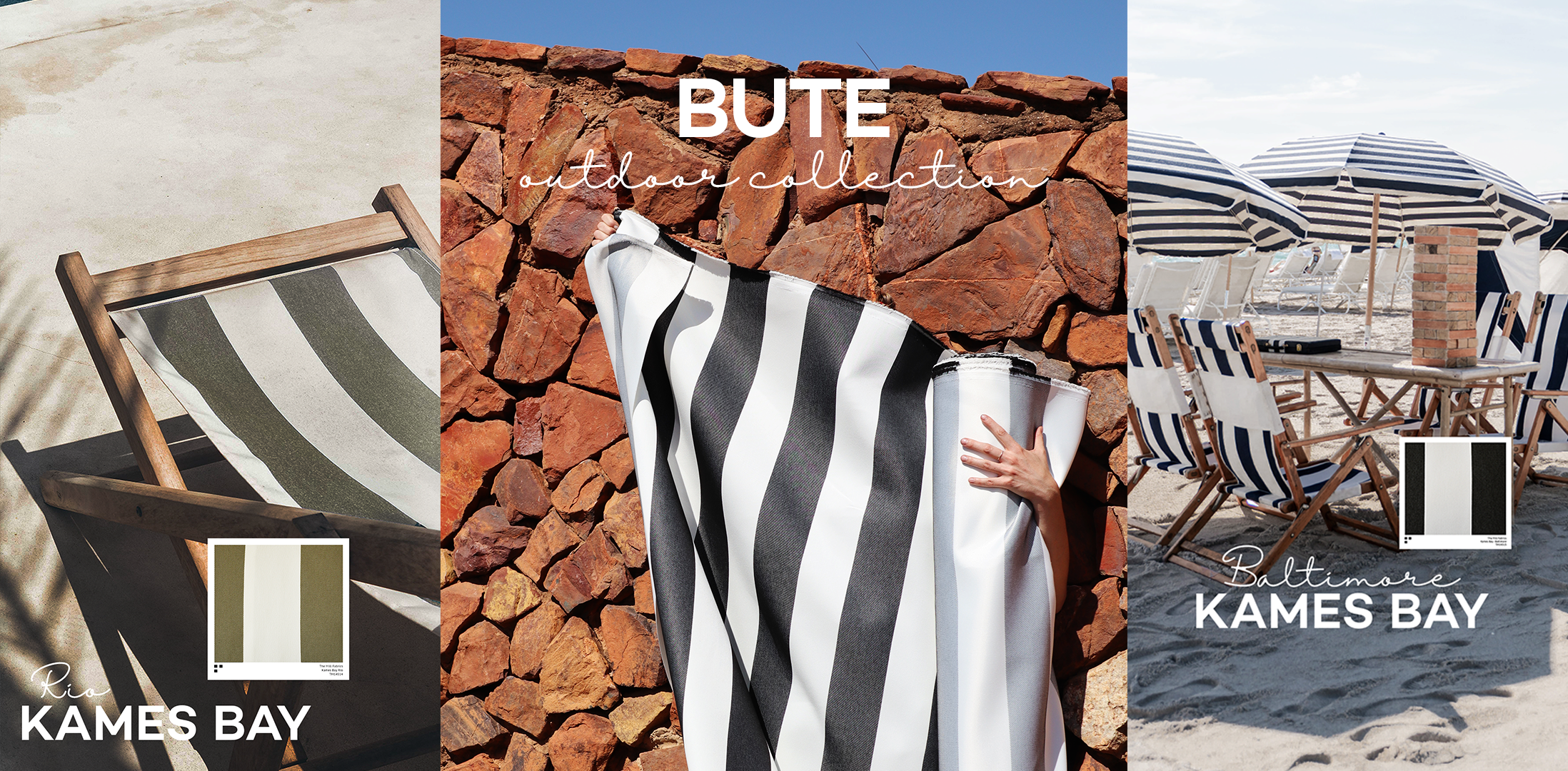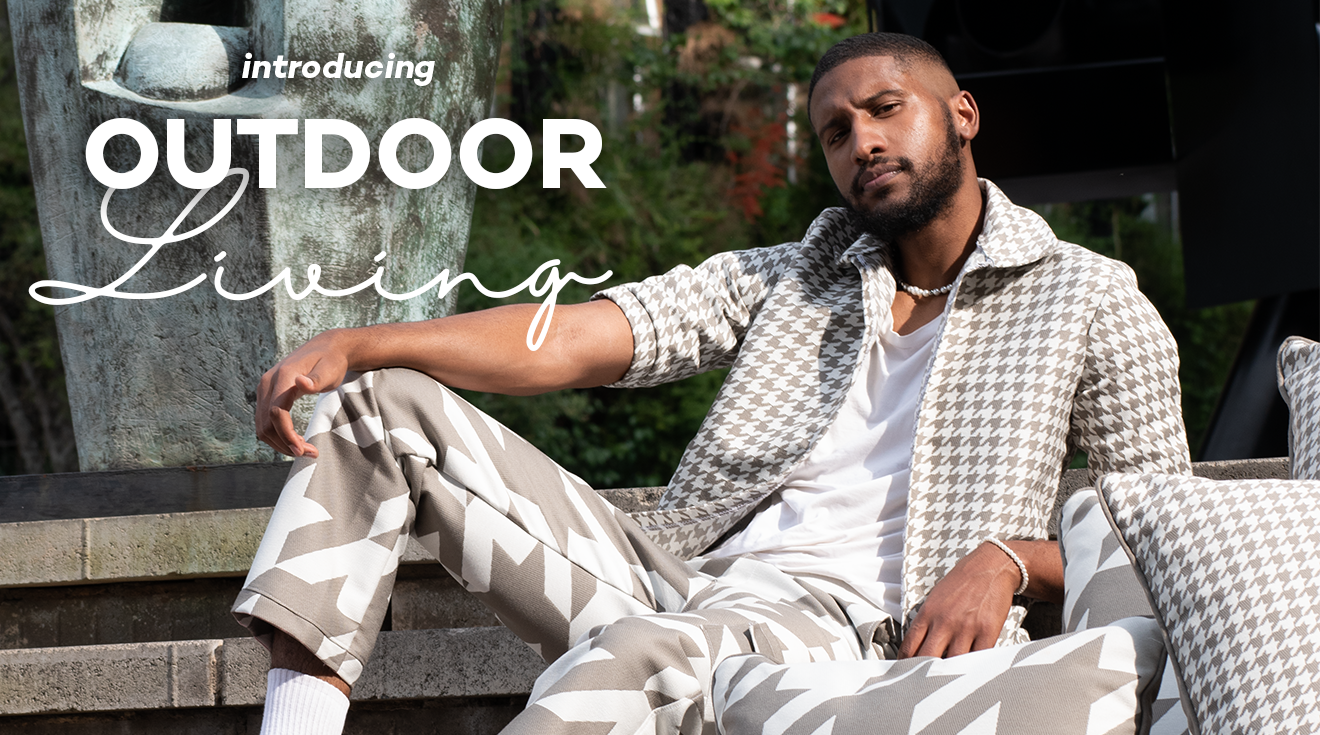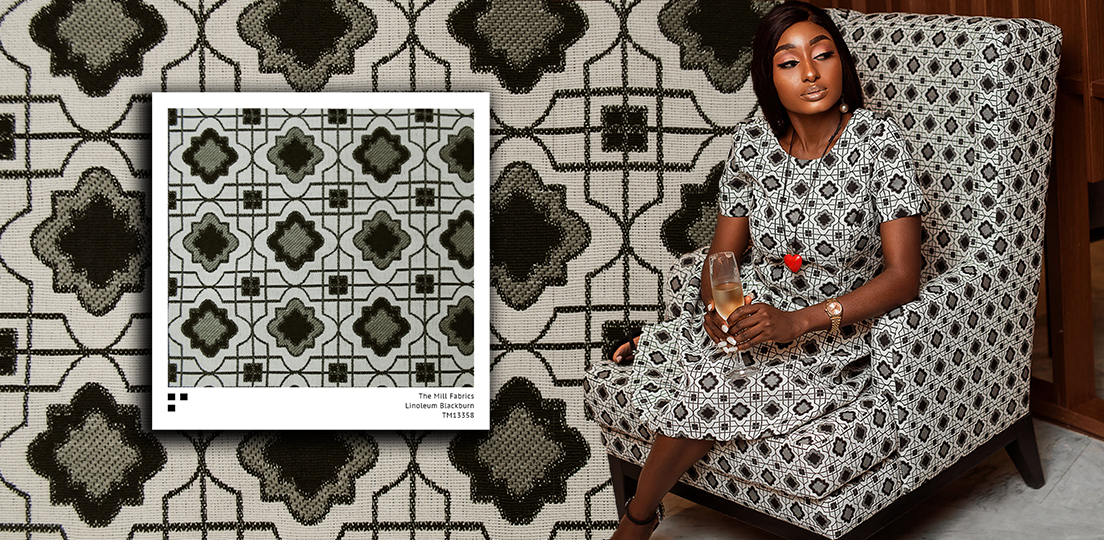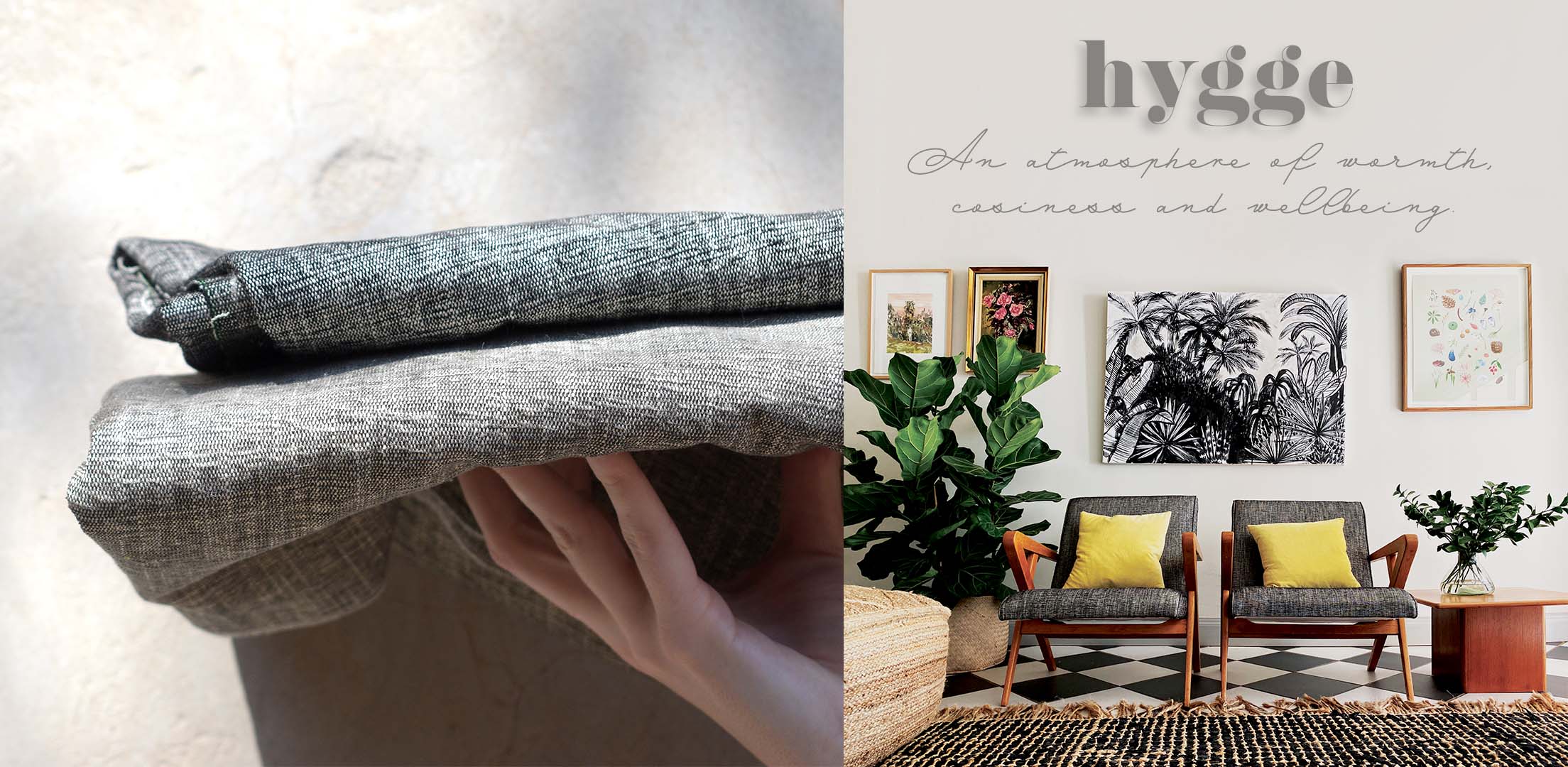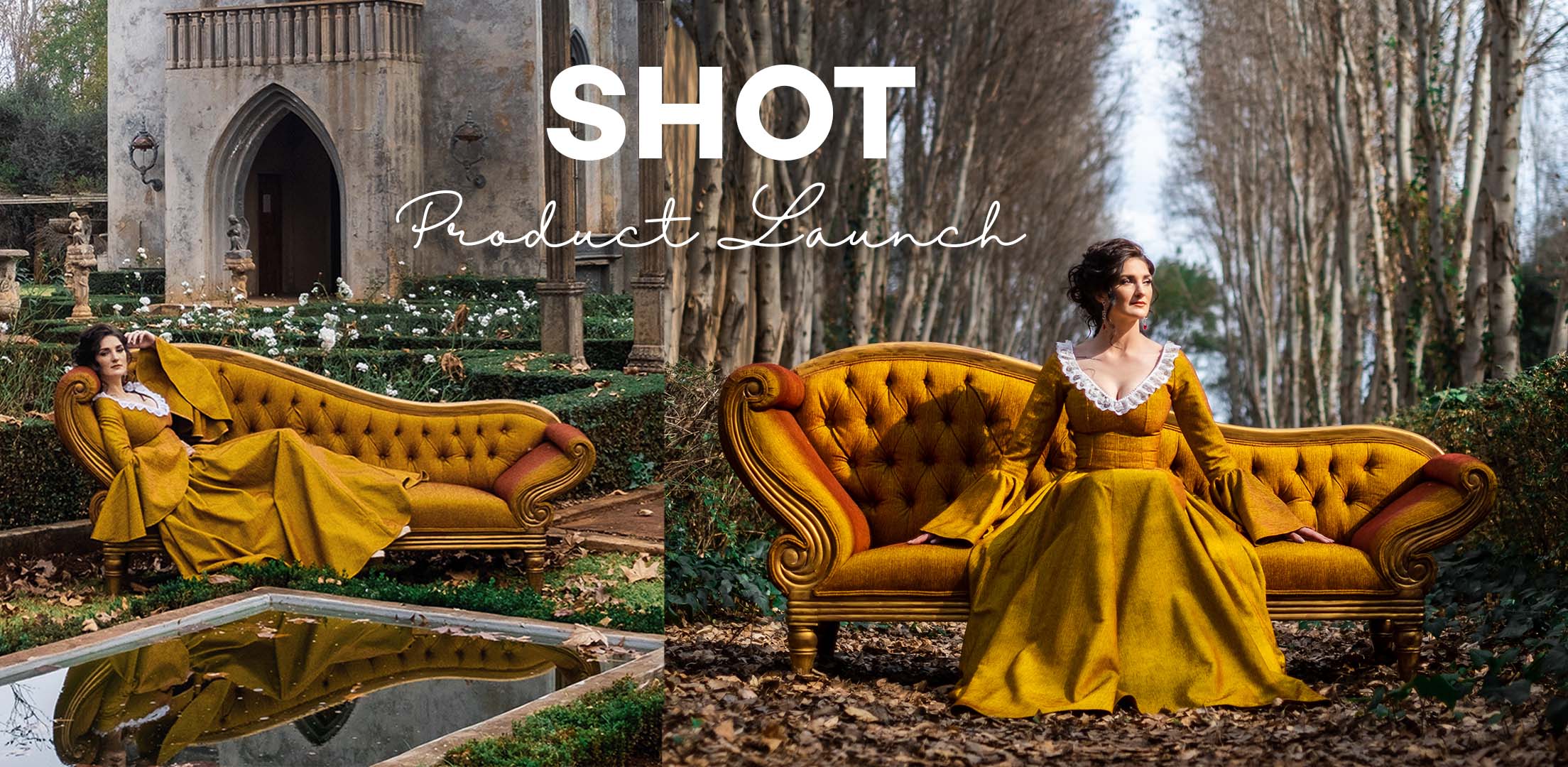Why is our Bute outdoor collection so special?
Not only does each fabric boast excellent technical specifications and finishes, each design name is based on Scottish holiday destinations where founder, Lorna Bailey used to spend childhood holidays. This collection is truly a walk down The Mill’s memory lane!
Reminiscent of holidays spent on the Isle of “Bute”, this freshly coloured collection not only looks fabulous but also carries all the necessary technical characteristics required to brave the elements of the harsh South African climate. All designs are woven with solution dyed polyester yarns thus providing the best possible resistance to UV light and giving the technical specification of a 8/8 colourfastness rating. There are various additional exterior living benefits with special finishes such as Soil and Water repellent, Anti-Microbial and Anti-Mildew protection.
Sit back, relax and enjoy the outdoor spaces with The Mill Fabrics as we unravel all the technicalities of outdoor textiles.
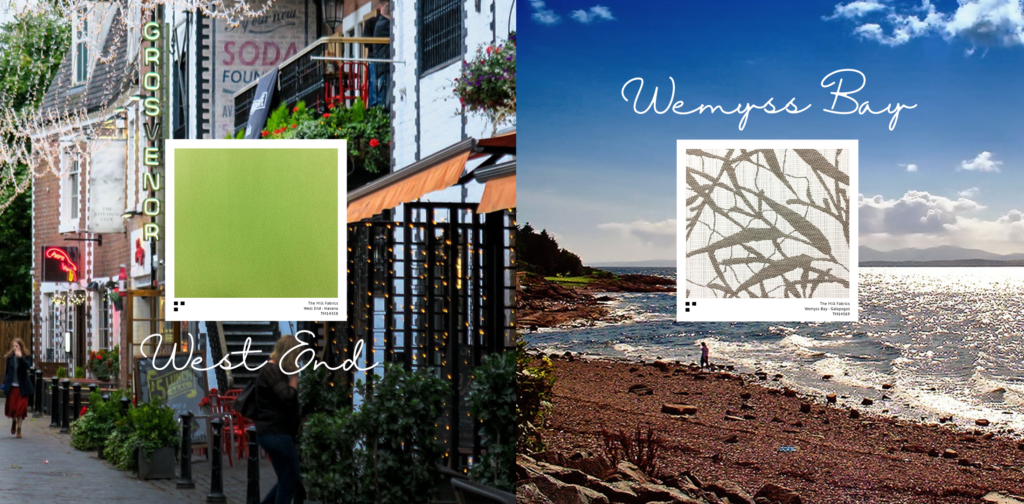
Our Bute collection is woven with high quality solution dyed polyester yarns. Polyester is an excellent choice for outdoor fabrics because it is resistant to stretching, abrasion, mold/mildew, and rot – it’s also lightweight and flexible. Solution-dyed polyester is especially great for outdoor use since it has exceptional UV/sun resistance and wear properties. Not to mention, solution-dyed fabrics are much better for the environment (less water waste is used during production).
Solution dyed yarns are created by adding a masterbatch colorant to the polymer melt in spinning or extrusion. This results in fibers and filaments that are fully impregnated with pigment coming out of the spinnerets in a one step process.
-
Solution Dyed yarn is highly resistant to UV fade and shade changes
-
Solution dyed yarns are fully uniform in color and typically do not vary from lot to lot
-
Solution dyed yarns are colorfast, resistant to multiple washings and mild bleach solutions
-
Energy costs for doped dyed yarns is the same as natural yarns
-
More environmentally friendly since no water is used in the solution dying process
-
Large lot sizes needed for solution dyed yarns, usually 4500 KGS or 10000 Lbs.
-
Fewer colors available, custom colors impossible without very large lot quantities
-
Depending on the fiber being produced, potential for slightly lower tenacity for solution dyed yarns
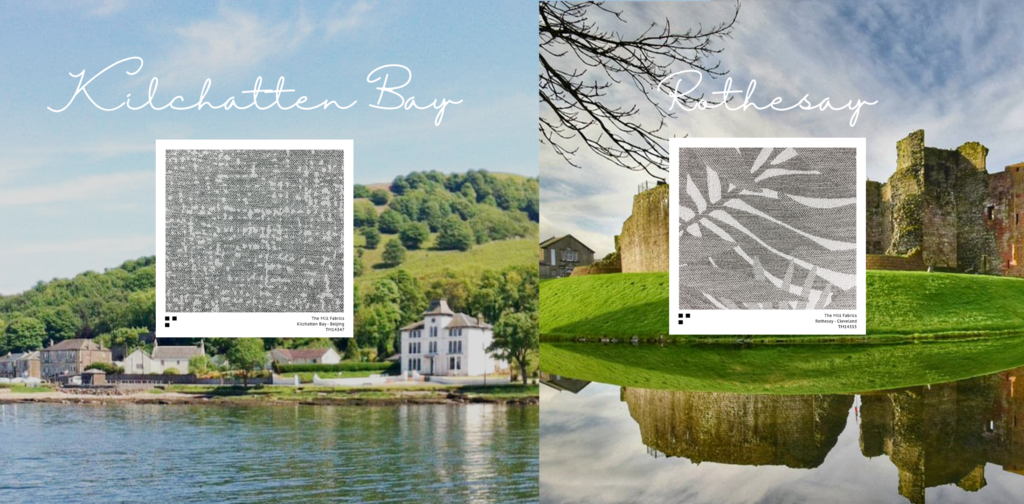
Fabric finishes are chemical or mechanical processes applied to fibers, yarns, or the final cloth. They contribute to either the aesthetic or functional qualities of the fabric and increase the serviceability of a textile. General finishes such as bleaching, dyeing, shearing, brushing, pressing, tentering are applied to many kinds of cloth. Our Bute collection is treated with Soil and Water repellent, Anti-Microbal and Anti-Milldew finishes.
Soil & Water repellent finish
Soil & Water-repellent finished fabrics are resistant to wetting. These fabrics remain pliable and soft, it can breathe and is comfortable to sit on or wear. This finish also assists the cloth in remaining its shape. After continuous exposure of liquid to the fabric it can be penetrated by water. Soil & Water repellent finishes are different to waterproof finishes which gives complete protection from penetration of water. Air and water do not penetrate a waterproof coated fabric and this lack of air penetration may make the furnished piece or garment uncomfortable to touch.
Synthetic fibers like polyester yarns are naturally resistant to waterborne stains. Oily substances roll off and can be wiped away completely. Spots which dry unnoticed can be removed with warm water and a non-harsh cleaning solvent. It is important to remove all spots or stains as soon as possible. Although our Soil & Water repellent finish assists in the cleanliness of the fabric, we do suggest proper housekeeping by getting professionals to clean tough stains.
A mildew resistant finish is a chemically applied to a fabric to prevent growth of mildew, mold and fungus. These will grow wherever there is available foodstuff and moist, humid conditions. Synthetic fibers are more resistant to mildew and mold, but if the fabric is soiled it can still be affected.
When you think of mold and mildew, you probably think about wet, cold places. But did you know that both types of fungus can grow on any surface? It’s important that you keep your interiors dry and clean. but using mold and mildew resistant fabrics can offer an added layer of protection.
When it comes to preventing fungus growth in your interiors, surfaces and soft furnishings, knowledge is key. Here are some tips on how to prevent the spreading of mold:
-
If you have a leak or spill, dry it quickly and completely. If you dry an area between 24-48 hours after it is saturated, it will not likely grow mold. Deep clean interiors often.
-
Make sure to keep your roof gutters repaired and clean so moisture does not build up. This also prevents leaks.
-
Don’t let water collect around the foundation of your property.
-
Make sure your air conditioning units are clean and drip pans are dry.
-
Open windows regularly to reduce humidity of bathrooms after showers.
Not only is mold unsightly and damaging to the integrity of fabrics and structures, but it can also be hazardous to human health. Be sure to take all necessary preventative and sanitary measures and rather opt for a fabric with a mildew resistant finish!
An antimicrobial fabric is any textile that offers protection against bacteria and other hazardous microbes.
Antimicrobial textile is ideal for many commercial, residential, and industrial applications. Our antimicrobial textiles can take several minutes to kill microbes. Thus, it cannot be used as a substitute for hygiene and other health and safety precautions. Anti-Microbal textiles should be thought of as an extra layer of defense against harmful microorganisms to use, in addition to your regular sanitary protocol.
While antimicrobial fabric works great to slow the growth of microbes, it does not kill pathogens on contact, meaning it can not stop the spread of viruses.
From West End to Wemyss Bay, The Mill has got your outdoor needs covered. Visit our blog to read about the technicalities of the finishes found in our Bute collection. Lastly, don’t hesitate to call for some Scottish assistance in the proper pronunciation of our design names.
